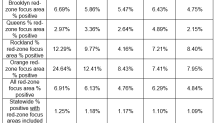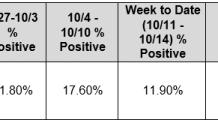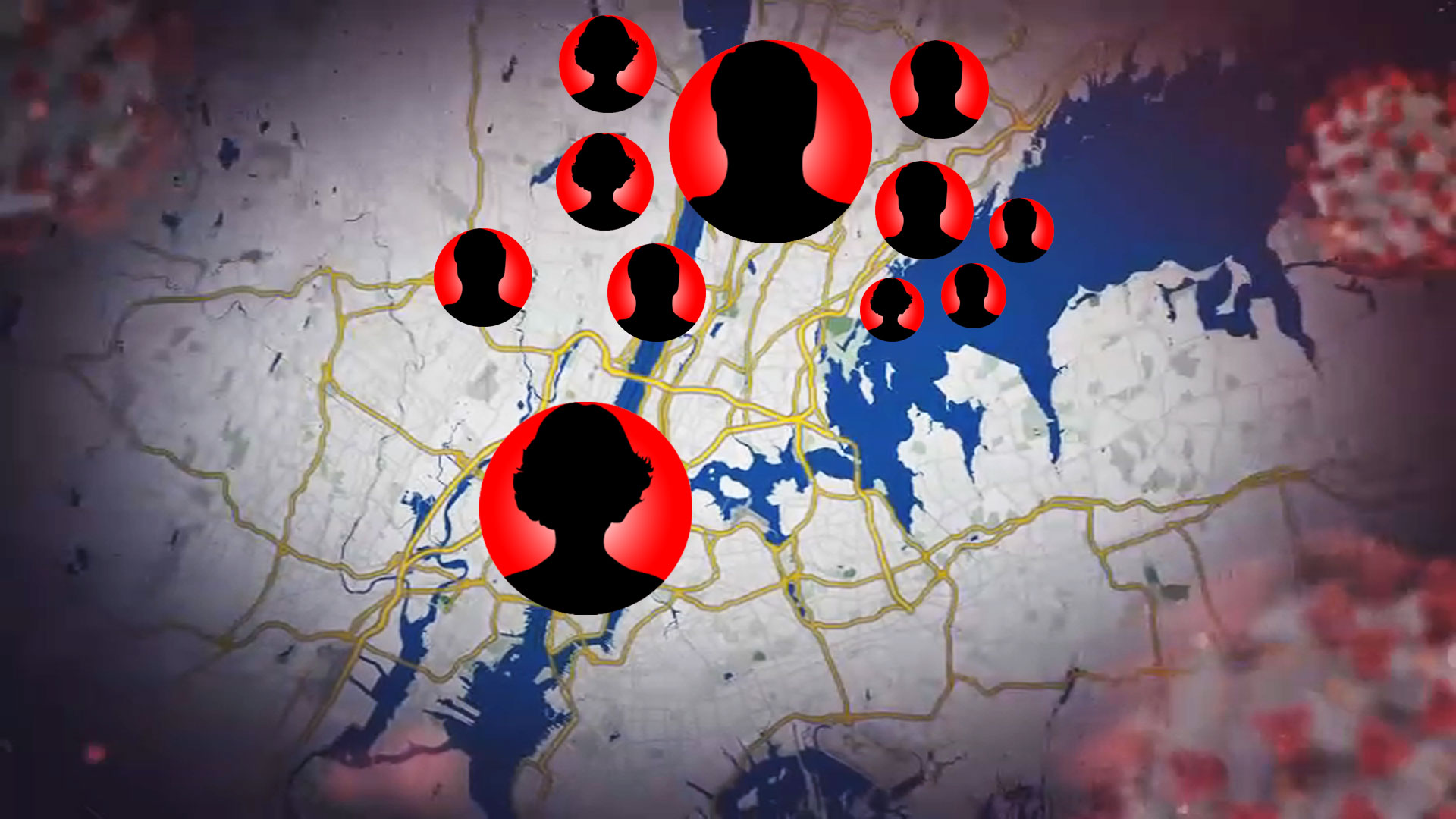What to Know
- Gov. Andrew Cuomo is threatening to withhold state funding from localities and schools that violate the cluster area restrictions he imposed on Brooklyn, Queens, Rockland and Orange last week
- Hospitalizations in New York state -- and the city -- have hit their highest totals since late June; Cuomo says the red zone cluster areas have driven 70% of the admissions increase since early September
- New Jersey is also seeing hospitalizations hit months-long highs; Gov. Phil Murphy said small household gatherings are largely driving the uptick and urged people to be cautious even in their homes
New York state is cracking down harder on enforcement in red zone cluster areas as hospitalizations soar to months-long highs, while the governor of New Jersey urged people not to let their guard down even in their homes Thursday. There are increasing signs of community spread -- and small gatherings are a key reason.
The developments come as roughly three dozen U.S. states see increases in new daily cases and hospitalizations -- an alarming trend CDC director Dr. Robert Redfield says is being driven largely by small household and other gatherings where precautions are not up to par, despite large-scale compliance overall.
That has certainly been the case in New York as of late, with micro-clusters, as Gov. Andrew Cuomo calls them, tied to non-compliance on both the face-covering and gathering size fronts in highly specific locations. But it's not a new issue -- Cuomo said people in the hotspot areas have flouted the rules since March.
"Very few of the clusters we have had in New York would have happened if we would have had compliance and enforcement," Cuomo said Thursday. "These are small situations. This is a Sweet 16 party on Long Island. This is a bar in Broome County. They are episodic, but one episode can create dozens of cases."
That has been evident in the hotspot areas in Brooklyn, Queens, Rockland, Orange and Broome counties, where Cuomo rolled out new restrictions last week. They apply to varying degrees on a risk basis, which Cuomo mapped out in a color-coded cluster scheme next week, assigning red, orange and yellow shades to highly targeted geographic areas. Red zone areas are the highest risk spots under Cuomo's plan; those spots have long flouted COVID protocols, he says.
Under the new rules, which apply for at least 14 days from implementation, red zone schools are closed, mass gatherings are banned, nonessential businesses shuttered and capacity caps reinstated on houses of worship. There have been violations, especially when it comes to schools and religious institutions.
Frustrated again, Cuomo issued a "last and final warning" Wednesday as he signed an executive order giving himself the authority to withhold state funding from any "public or nonpublic school or school district and/or to a locality" that violates the order he signed last week establishing the cluster zone restrictions.
He said he didn't have a choice.
"I don't know how else to get them to actually do the enforcement they need to do," Cuomo said Wednesday. "I guarantee if a yeshiva gets closed down and they’re not going to get state funding, you’re going to see compliance.”
Cuomo didn't immediately say exactly how much money would be withheld or name schools that were breaking the rules. He said the state has wide discretion; it could withhold all state funding if the governor decided to do so.
New York City's sheriff's office has issued at least $172,000 in fines over COVID rule violations since Friday, but just 19 of the 60 summonses doled out were in red zone areas. Cuomo says that's where more focus needs to be, given reports that some schools are staying open in defiance of the closure orders.
However, some have complained that it hasn't been completely clear what areas are red zones versus yellow zones. In Rockland County, Spring Valley posted notices along Main Street — which divides the two zones — letting residents know where each zone is (it was apparent that some were unaware, as a hair and a nail salon were both open Thursday, not knowing they were located in a red zone). County Executive Ed Day announced schools, child care programs and bus companies must ensure students wear a mask — or face a $2,000 fine.
Mayor Bill de Blasio stayed true to his oft-repeated line Thursday that overall, the city is in compliance. A few are not -- and threaten the greater good. He said the city has inspected more than 18,000 inspections in the last two weeks and issued 288 summonses separate from the sheriff's office. Eleven of those summonses came with $15,000 fines each, he said. He didn't say how many were in red zones -- and he said he was awaiting further state guidance on child care in those areas.
While the red zone cluster areas cover just 2.8 percent of the state's population, that same 2.8 percent accounted for 11.5 percent of all positive cases Wednesday and 11.9 percent of all positive cases this week, Cuomo said. The red zone share is still disproportionately high, but those ratios have dropped in recent days. The red zones had a positivity rate of 4.84 percent as of Thursday, Cuomo said, down from 6.29 percent Wednesday but still more than four times the statewide average excluding them. Since early September, they've driven about 70 percent of the increase in hospitalizations, which are at highs unseen since June.


The state is averaging 123 new hospital admissions each day this month, up from 94 in July and as low as 69 in August. As of Thursday, it reported 897 hospitalizations, down from 923 Wednesday, which was its highest since June 25. New York City has also reported its highest hospitalizations since late June amid the cluster battle, though its total dipped slightly (433) Thursday from Wednesday.
Mayor de Blasio has called this a "decisive week" as far as the city's ability to turn the tide. In his Thursday briefing, he reiterated what he said earlier in the week -- that there were signs of a leveling off in the cluster areas. The daily case average dipped below 500 for the first time in at least a week, likely in part because it incorporates the latest round of weekend data, which tends to incorporate less testing overall than weekdays. New hospital admissions continued to rise. Those tend to lag increases in new cases. So do fatalities.
That's why the mayor warned, "We still have a lot of work to do," despite his cautious optimism on the numbers front. "I am deeply concerned here that there is a threat of a second wave. My job is to stop the second wave."
There were other encouraging signs. State numbers show the reddest zones of Brooklyn and Queens went from positivity rates of 6.69 percent and 2.97 percent, down to 5.47 percent and 2.64 percent.
Asked Thursday whether "leveling off" would be sufficient to relax the restrictions when the 14-day minimum window is up next week, de Blasio said he wasn't sure yet -- and that he would have a better idea of where the numbers stand trend-wise by Sunday. He said the plateau was a necessary first step toward that goal, but acknowledged the state will have the final call -- a point Cuomo later emphasized.
"It's a state regulation, the state will make the determination. It's not up to the city of New York, it's not up to the mayor," he said. "It's too early to tell on the numbers. I know from the actions we are retaking, they are having an effect. That I know."
When asked if he felt encouraged by the numbers as de Blasio said he did, to some small degree, at least, the governor said it was too soon to tell.
Tracking Coronavirus in Tri-State
Like New York, New Jersey has seen some of its highest new daily case totals and hospital admissions in months in recent days. On Thursday, it reported 733 COVID hospitalizations, the highest total since Aug. 5. Its new daily caseload has nearly doubled in recent weeks amid upticks in Ocean and Monmouth counties.
Gov. Phil Murphy acknowledged in a CNBC interview Thursday that "our numbers are up, no question about it, over the past several weeks" due to some hotspots that are starting to turn more widespread. He said he didn't foresee another total shutdown, but noted, as he did last week, "We're much more likely to use a scalpel and go into a particular community." The problems are specific, as in New York.
Daily Percentage of Positive Tests by New York Region
Gov. Andrew Cuomo breaks the state into 10 regions for testing purposes and tracks positivity rates to identify potential hotspots. Here's the latest tracking data by region. For the latest county-level results statewide, click here
Source: ny.gov
To Redfield's point on small household gatherings, Murphy talked about the upcoming threats posed by Thanksgiving and the broader holiday season the ongoing impact that small family gatherings are having on the state's case total.
"It's where we can't get inside your house, where we can't get inside of packed-in congregate multi-generational family living, especially, that's where we're seeing not all of the challenges, but the bulk of them," Murphy said.
Some of New Jersey's increase had been tied to the time period around the Jewish high holy days. The state has also confirmed 22 separate public school outbreaks and 83 cases as of Thursday, up from 16 outbreaks and 58 cases as of Murphy's last report. New Jersey oversees more than 3,000 school buildings.
Colleges continue to be a breeding ground for COVID. Monmouth University has seen nearly 5 percent of its student enrollment test positive after an illicit off-campus gathering turned into a "super-spreader event," its president said. On Long Island, LIU Post switched to all-remote learning after a recent uptick.
"We do not want a Thanksgiving dinner to turn tragic because someone unwittingly exposed a large number of their family members to the coronavirus," Murphy said, urging people to limit how many they invite to the table. "This is not the year to plan to visit out-of-state relatives or to invite them to New Jersey."
He said the state would move to regulate what it could ahead of the holiday season, but there are of course limitations to that end within private homes.
Health Commissioner Judy Persichilli said New Jersey is seeing increasing signs of community spread, with case and positivity rates and COVID-like illnesses up in virtually every region of the state. The entire state is now shaded yellow, which means moderate COVID activity, for the first time, she said.
Connecticut is also seeing its largest uptick in new COVID cases and hospitalizations since June -- and it comes just a week after the state entered Phase III of its reopening process, when indoor capacity was upped to 75 percent.
The tri-state upticks come as the nation -- and the globe -- continue to see cases increase. Record daily infection figures in Germany, the Czech Republic and Italy are adding to fears that Europe is running out of chances to get a grip on the coronavirus pandemic. The U.S. eclipsed 8 million coronavirus cases on Thursday, which leads the world, and nearly 217,000 confirmed deaths. Globally, there have been 38 million reported cases and 1.09 million confirmed deaths.
U.S. infectious disease expert Dr. Anthony Fauci has said in no uncertain terms that America is "in trouble" it heads further into fall with the current case trends it is seeing. He urged Americans to return to focusing on the "fundamentals" in order to stem the tide: mask up, wash hands, socially distance to stem the tide.
Both Fauci and Redfield warned this week Thanksgiving could pose a major threat to the United States' war against coronavirus, given the recent increases.



